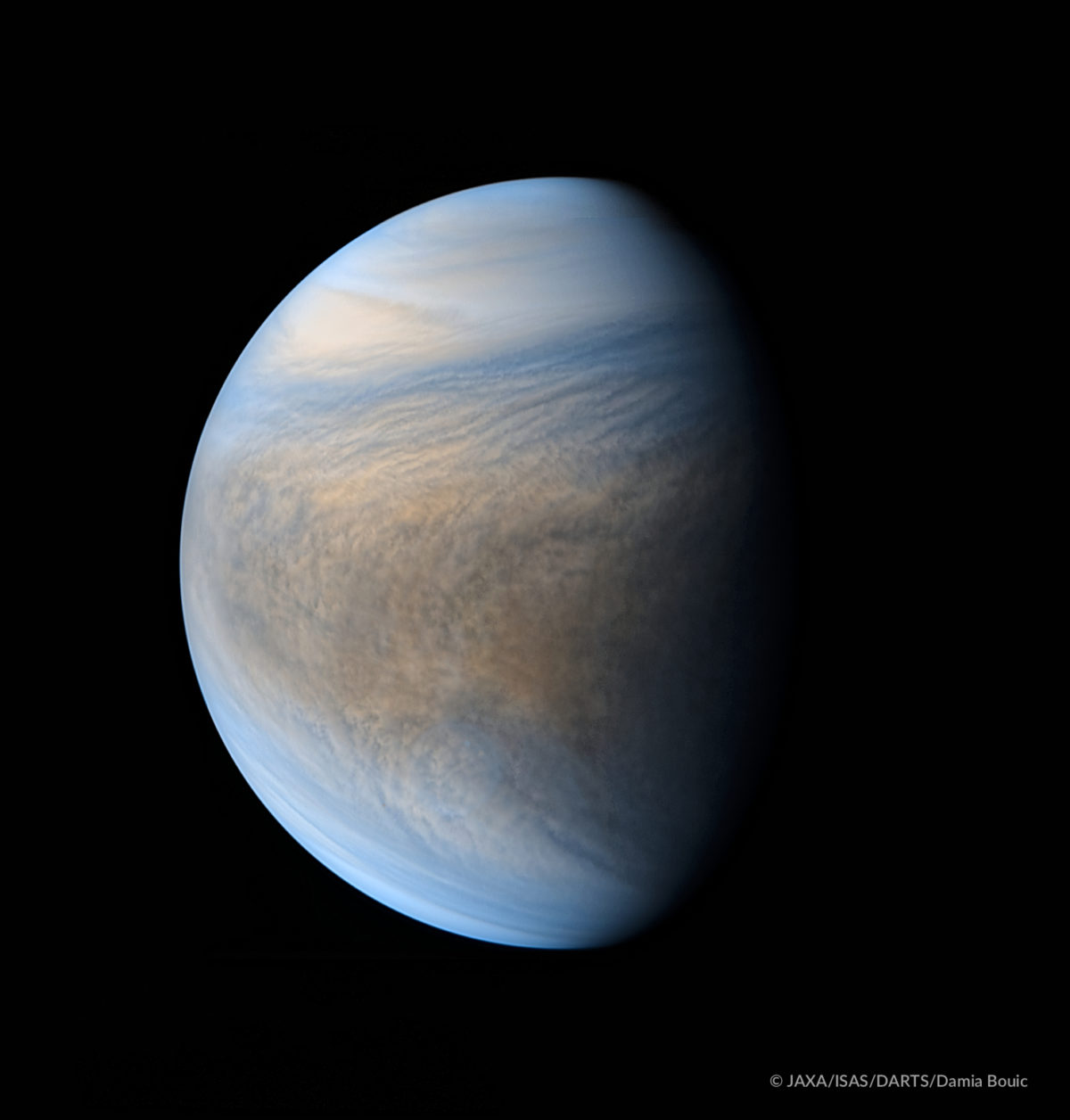Kate Howells • May 16, 2023
Why is Venus called Earth’s twin?
If you were asked which two planets were the twins of our Solar System, you’d probably pick Uranus and Neptune — two mysterious, blue ice giants in neighboring orbits around the Sun. But there’s another contending pair: Venus and Earth.
These two rocky worlds may at first glance appear very different, but Venus is often called Earth’s twin sister. With such apparent differences, what makes these planets twins?
Comparing Earth and Venus
Venus is shrouded in a thick carbon dioxide atmosphere with swirling clouds of sulfuric acid, making the planet look fuzzy and yellow from the outside, unlike our serene planet of blue, green, and white. The Venusian atmosphere also creates extremely different conditions from those we see on our planet. Whereas Earth is a watery oasis, Venus is too hot for liquid water to exist, with surface temperatures as high as 460 degrees Celsius (860 degrees Fahrenheit). That heat comes from the greenhouse effect caused by the atmosphere of Venus, which is so thick that it creates crushing pressure at the planet’s surface.
On a deeper level, Venus and Earth really are very similar. Venus is only slightly smaller than our planet, with a diameter that is about 95% that of Earth's. Venus also has a similar mass and density to Earth due to their comparable composition; both planets have a layered structure, with cores composed primarily of iron and nickel surrounded by rocky mantles rich in silicates and other minerals, with thin crusts on their exteriors.
Because of these similarities, planetary scientists also think that Venus and Earth formed at around the same time and from similar building blocks. In fact, for much of their early history Venus and Earth were likely much more similar than they are today.

Two volcanic worlds?
Planetary scientists are confident that Venus used to be volcanically active; there are now-dormant volcanoes across the planet’s surface. Until recently, there was no evidence that Venus remained volcanically active today. But recent findings based on data from NASA’s Magellan spacecraft suggest that there might be present-day volcanic activity on Venus. Follow-up observations of the planet’s surface will be needed to confirm it, but if Venus is indeed a geologically active world that would make it even more similar to present-day Earth.
Peering into Venus’ past
In its early history Venus is thought to have had a much thinner atmosphere than it does today. This allowed for cooler surface temperatures and lower atmospheric pressure, potentially allowing liquid water to exist on the planet’s surface.
Some models suggest that early Venus may have had a global ocean of liquid water that covered much of its surface. This ocean would have been similar in size to the Earth's oceans and may have persisted for hundreds of millions or even billions of years. During this time, Earth and Venus would have been much more obvious twins.

Over time, the temperature on Venus began to rise. Carbon dioxide built up in its atmosphere, creating a runaway greenhouse effect; the atmosphere trapped heat, which sped up the production of more heat-trapping gasses, and on and on. The Venusian oceans evaporated, the planet became an inhospitable wasteland. Today, it wouldn’t be unreasonable to call Venus Earth’s evil twin.
Robotic investigators to solve planetary mysteries
The exact causes for Venus’ dramatic evolution still aren’t known. To find out what happened, we need to send more missions to study the planet. Several missions to Venus are in development right now. ESA’s EnVision orbiter, which will launch as early as 2031, will study Venus’ surface, subsurface, and atmosphere; how they interact; and what drove the changes the planet has experienced throughout its history. NASA’s DAVINCI mission aims to launch an orbiter in 2029 to study the Venusian atmosphere, answering questions about how it has changed over time. And NASA’s VERITAS mission, which is currently facing an indefinite delay due to budget cuts, would map the planet’s surface in more detail than ever before, answering questions about whether Venus is volcanically active, among others.
With the support of space advocates, these missions could make the 2030s a decade of discovery about our planet’s mysterious twin.
Support our core enterprises
Your support powers our mission to explore worlds, find life, and defend Earth. You make all the difference when you make a gift. Give today!
Donate

 Explore Worlds
Explore Worlds Find Life
Find Life Defend Earth
Defend Earth

